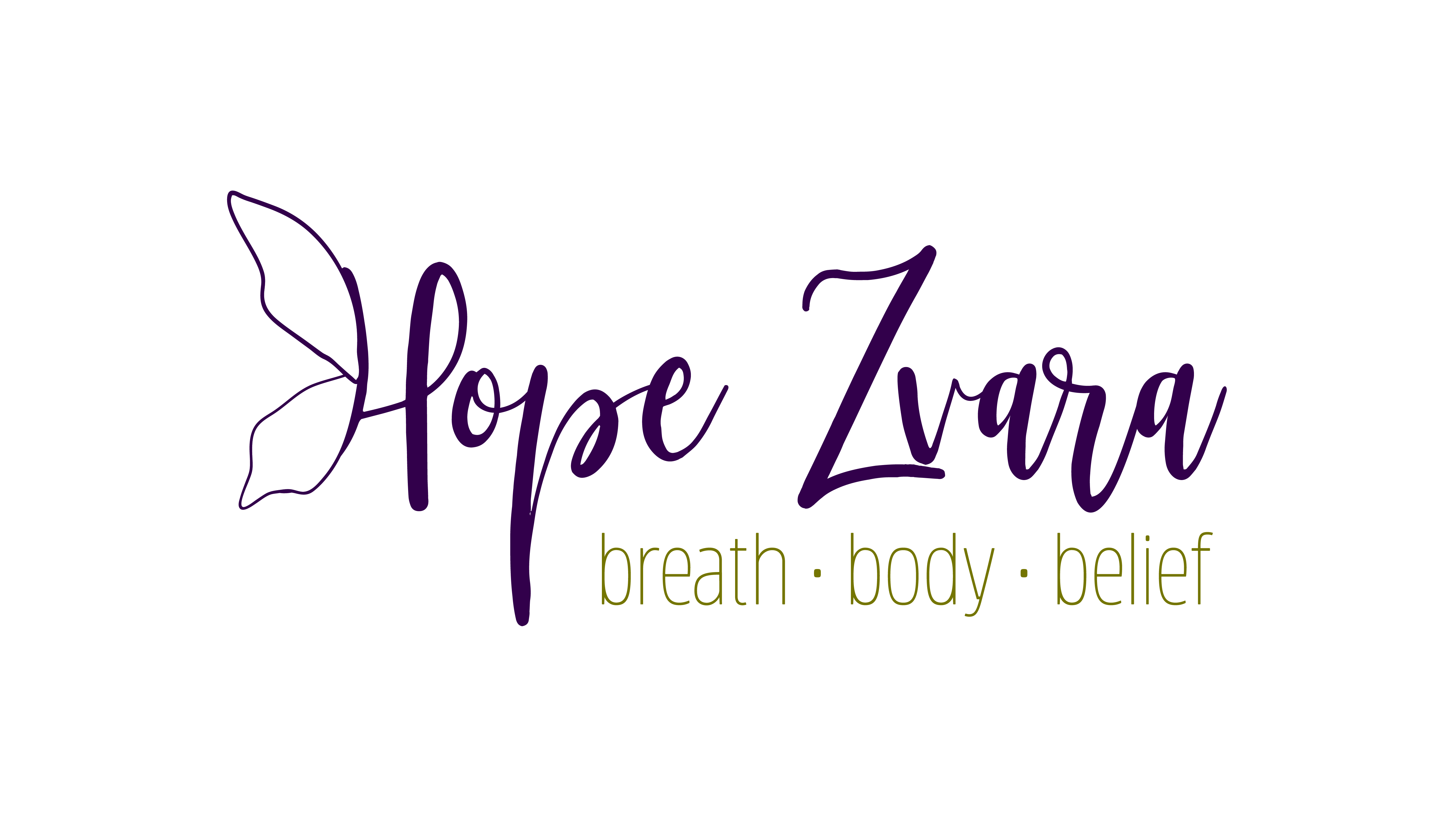
by hope | Apr 22, 2022 | Core Functional Fitness

After a hard workout at your local gym similar to Fitness 19, you’ll need to relax and unwind. Post-exercise recovery is important for a healthy body and mind. It helps in reducing the risk of diseases like heart disease, diabetes, obesity, and cancer.
Some people believe that post-workout recovery is an excuse to eat junk food and overindulge in other unhealthy habits. Although these people do not get the full benefits of their workouts. Many health professionals recommend a period of rest after intense exercise to allow the body to repair itself and have recognized the importance of post-workout recovery.
Drink some water
After a strenuous workout, your body needs to be hydrated. But it is important that you drink water in the right amount and at the right time.
Drink water after a workout session to keep your body hydrated and avoid dehydration. Your muscles need water to help them recover from exercise. Without enough water, your muscles cannot repair themselves as well as they should.
If you’re doing intense cardio exercises like running or cycling, drink up to 2-4 liters of fluids during and after the session for best results.
Take a nap or doze off for 10-20 minutes
You should take a nap after your workout session because it helps you recover faster. You will also be able to maintain your concentration and focus if you take a nap after a workout session.
A study shows that people who nap after their workouts are more likely to experience better sleep quality and less fatigue than those who do not nap. People who napped were also less likely to experience muscle soreness the next day.
Napping is also beneficial for your brain, as it helps improve memory retention, mood, and alertness levels in the long run.
Stretch out your muscles
Post-exercise muscle tissue is in a state of repair and growth. The muscles are damaged during exercise and they need time to rebuild and grow stronger. This process is not only important for the muscles but also for the body’s overall health.
Stretching after a workout is not only good for your muscles but also helps with reducing soreness, improving blood circulation, and increasing flexibility.
You should stretch after your workout session because it helps you feel better both physically and mentally.
Meditate and Relax Your Mind and Body
There are lots of benefits of meditating, and it can help you relax after a tough workout session. It can also help to lower your blood pressure and reduce the risk of stress-related diseases. Meditation can help you reduce stress, improve focus, increase creativity, boost memory, retention, and recall, reduce pain, improve sleep quality, and increase energy levels.
If you want to enjoy the many benefits of meditation, it is important that you start with regular practice. Your first step could be to set aside 10 minutes in your day for meditation. So, after a hard workout session, it is important to relax your mind and body.

by Hope Zvara | Dec 30, 2020 | Core Functional Fitness, Inspirational, Lifestyle
We all have had those moments that were life-changing, those words of wisdom that just stuck and truly impacted us, and over the last several years or so I have had many, and I just want to share them with you. These words of advice, thoughts, and ideas have come in all forms and from all kinds, some from others, some from my own insights, but each of these have had a significant impact on me, not because of the power of the words but because of what I was able to do afterward. These are 12 nuggets of advice that have changed my life.
This is just one moment among many moments in your life right now.
I would get so caught up in the mistakes, things I did or didn’t do or the feelings I was having. Time never stops and all things pass, no matter where you are right now it will soon be over.
When something stinks, step back and make sure it’s not you who smells.
We all want to blame others for what we did or didn’t do ourselves; it takes a far bigger person to admit when they are wrong than it does to point the finger.
Kill em’ with kindness.
When in doubt, you can’t argue with kindness.
You have everything you need right now.
I used to hate this saying, but wherever you are right now you are fully equipped to tackle it, just check to make sure you are using all that is available to you.
You can’t change everyone else you can only change yourself.
If you want others to change, be the example first.
Always be willing to have the hard conversations.
Any time I have ever had to have a difficult conversation, and actually had the courage to have it without getting in the way, the outcome has always been for the better.
Never be afraid to be honest, you can’t control how others receive your truth.
We typically fear the truth because we worry about what will happen after, but cleaning up a lie is way more work, because you don’t have to clean up the truth.
One thing at a time.
We want it and want it now, except we first need to enjoy what we have right now.
Life gives you exactly what you need.
Because where you are is exactly where you need to be in order to get where you are going.
Never be afraid to be who you are, as long as you do it in an honest way.
It’s one thing to be you and do it with a thorn in your side, it’s another to do it in a way that encourages others.
Don’t take shit from anyone.
Those that give you shit probably don’t want to deal with their own, press on my friend.
You can change anything at any time, just be ready to deal with the consequences.
We can change anything and not all consequences are bad, many can and are good, but you won’t know any of that until you get up and do something.
As each year passes, I think to myself, how can I be better than I was before? Trying to live in my truth and live the life I want to rather than the life I think others need me to live.
The older I get and the more I experience life and speak my truth, the more I realize that I don’t have any time to waste living in a way that no longer serves me, and sometimes that means radical change, sometimes that means I can finally speak up in a way I never did before, sometimes that simply means that I live and act without fear.
I have watched far too many people, some very dear to my heart, live their lives in fear, and because of that they never went after what they desired or what they felt that life was asking them to. I have watched many make excuses as to why they made and are currently making the choices they are; but in the end, sadly, I dismay that they will not get where they are going because they simply won’t allow themselves the right to live boldly, in their own truth, because they fear what will happen to those around them and to themselves as they step into their own light.
I refuse to live that way and although I don’t know exactly where life will take me, I know where I am right now and have cultivated enough wisdom and honesty to step back and fully take advantage of the situations in front of me because although I do believe that life gives you exactly what you need, it’s your choice what you decide to do with it.
With that, I welcome the new year and hope that 2021 provides us with new hope and that we live our best lives and stay true to our true selves.
Deeply, Namaste.

by Hope Zvara | Oct 26, 2020 | Core Functional Fitness
Here are my 4 quick effective yoga poses to do while traveling, because if you are anything like me…I’ll take any help when I can get it.
Nowadays traveling can easily be an all-day affair and that means little movement and a whole lot of sitting. When you can take full advantage of my five quick and effective yoga poses to do while traveling for instant relief for all those traveling aches and pains.
Happy Travels!
4 Quick Effective Yoga Poses to do While traveling:
- Nervous Nelly Neck Stretches: Nothing like a crick in the neck from carrying all those awkward bags, the ergonomically correct posture perfect seats in the gate area or sitting in those super roomy airplane seats (NOT)… Relief is here…

- Flying High Hip Stretch: Again nothing screams happy hips more than an airplane or car seat. Get a little relief with this super quick, yet effective move.

- Twist and Shout Spinal Release: When your travels start to hit double digits, the body starts to feel the pain of those incredibly spacious seats whether it be on a plane or in a car. Pardon your neighbor and take a time out to twist and shout. A few of these throughout a day of traveling saves my back a lot of pain and stiffness in the days to come.

- Ground Level Pow-Wow: It always amazes me how many people are so eager to sit down before they sit down pre-flight. My suggestion, find some floor space (FYI it’s also usually where the USB and outlets are anyway) and take a floor seat. If you are taking a road trip, be sure to stop off every few hours to stretch your legs, get some fresh air, and do a little moving around. Here you can stretch out your legs and even do a forward bend or two.

O.K. I have to admit, I do love traveling and really don’t mind flying or road trips at all, but I have traveled on some less than comfy flights and cars. China Air really is not designed for Americans, even small ones like myself. And nowadays they are packing us in like sardines so it is yours and my best interest to do all we can to make that next trip as enjoyable as can.
Safe and Happy Travels!
Want even more from Hope?…

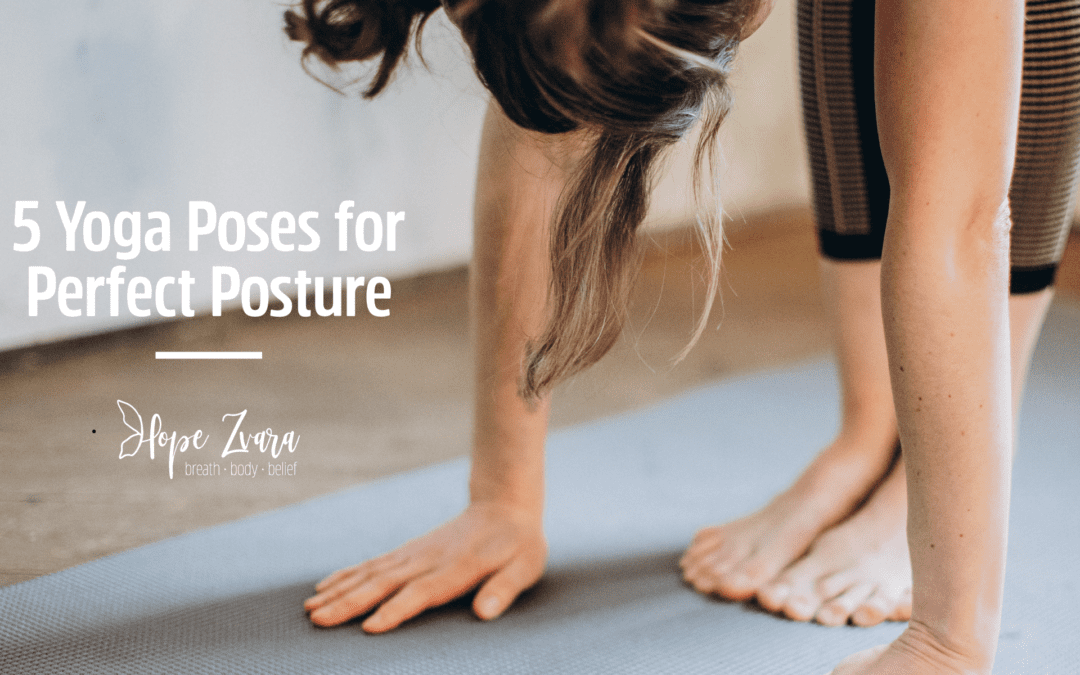
by Hope Zvara | Aug 26, 2020 | Core Functional Fitness
Practice makes perfect. And I’m talking posture!
Imagine being in a room full of people and someone walks in and instantly commands the room without a word spoken.
How do they do that? Fancy clothes? Fireworks? Paid groupies?
No. Amazing posture.
Perfect posture.
Because how you carry yourself says a lot about who you are, your self-esteem, your relationship with the world, and how you feel about yourself.
Ever observe someone depressed. They posture says “don’t come near me, don’t touch me”, a fetal like position of protection.
But when you see that person whose posture screams confidence, openness, and ease, you can’t help but want some of that secret sauce they have been drinking.
Only they haven’t been drinking, they have been moving. Moving in the right way.
So to help you on your posture perfect path not only for your body’s health and alignment but your own mental, emotional and social health here are my TOP 5 POSTURE PERFECT YOGA POSES.
Top 5 Yoga Poses for Better Posture
1. Heart Opening Mountain Pose
- Standing at attention with your weight even on your feet.
- Turn your feet to face forward and draw your pelvic into neutral (pubis bone and front hip bones all parallel with the front wall).
- Interlace your fingers behind your back (or grab a strap or towel if your hands can’t clasp or you can clasp but have no range of motion).
- INHALE, drawing the shoulder blades together and down as the arms externally rotate.
- Lift your chest gently and keeping space in the back of the neck gently lookup.
Play with rotating your arms and wrists to find the most appropriate release in the shoulders. Breathe deeply into the lungs to open the chest further. Enjoy for five to ten breaths.
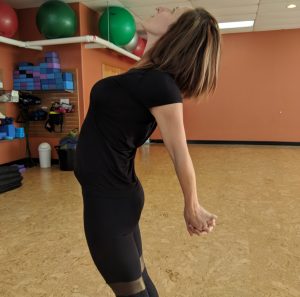
2. Shoulder Blade Runner
- Standing at attention in Mountain Pose, draw your arms up in front of you at shoulder height.
- Turn your palms to face each other and the folds of your elbows to gently face up (no hyperextension), keeping a solid pelvis (see #1) and a stable rib cage (no thrusting). Only move your shoulders.
- Inhale, pinching your shoulder blades together like they are going to come together over your spine.
- Exhale: reach your arms away without rounding your shoulders forward like you are reaching for an object just out of reach.
Repeat this movement focusing on range of motion ten to twenty times.

3. Turkey Neck Stretch
- Seated tall, relax your shoulders down and back.
- Drop your head forward and using your fingers pull down on the skin at your clavicles.
- Keep that connection and open your mouth as wide as you can.
- Keeping it open, tip the head back, as you do so pull down on the skin creating a facial stretch.
- Now close your mouth and imagine you have an underbite and push the bottom jaw upward.
- Try sliding the bottom jaw side to side to find the most viable stretch. Hold for up to ten breaths.
- Gently bring the head back to center.
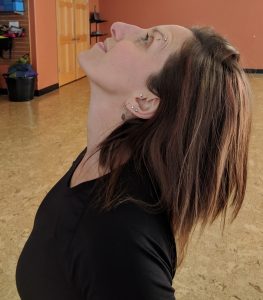
4. Melting Wheel
Dust off your large Swiss ball (the one you bought thinking you’d sit on at your desk, make sure it’s well inflated). Take a seat on the edge of it and slowly start to lean back over the ball. If your lower back feels tight, tip the tail bone up between the legs to lengthen the lower back. Now play with where your arms lay to open the front line of the body and pretend that you are making a snow angel and when you find a point of release, hold your arms there until you feel release (your arms may not be symmetrical).
Play with your body and using your legs, experiment with squatting, and then moving your head towards the ground to choose where you want to focus-lower back and hip flexors or chest, arms and shoulders. Enjoy as long as you feel comfortable. To come up, begin to squat and roll yourself up back on top of the ball. And counterbalance by hinging forward.
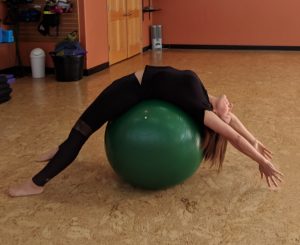
5. Rolling Forward Fold
Staring in Mountain Pose, bend the knees and imagine you are like a flag blowing in the wind. Exhale and loosely roll yourself down into Forward Bend. Like you were jumping on a trampoline, bend your knees and think about being sprung up (rolling) into a standing extension.
In standing extension keep your knees bent and float your pelvis forward as you arch back. You should feel your core turn on and your front line of the body stretch. Exhale, bend the knees, and fall/roll back down (think less control and more flow). Repeat this movement fine to ten times.
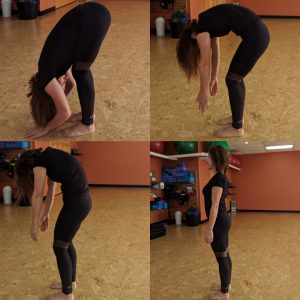
Posture does make perfect. Because how you present yourself to the world is how you receive it back.
I want to know: Which move do you like most?

by Hope Zvara | Aug 19, 2020 | Core Functional Fitness, Working With Hope
Beginners Core: How to do Pelvic Tilts.
What if reducing back pain, increasing core awareness, and strength. Reducing hip pain and aiding the natural curves in your spine “were” easy to do?
It has been brought to my attention on more than one occasion that we as a society often overlook the power of simplicity. Is it that we are lead to believe that if something isn’t complicated? Or expensive or taught at a fancy center that it cannot truly be helpful?
I occasionally have students mention that they are off to PT for this or that. Only to find that what they are being told to do are the very things they are learning in my classes. And the therapists are amazed at their sense of awareness and ability. Now, this is not to toot my own horn. But rather push my point that sometimes we don’t realize the power of something until we step away from it.
And the same goes for simple movements.
Have back pain? Who doesn’t?
Struggling with your, ahem, pelvic floor? You’re not alone.
What if there was something you could be doing right now to help those areas improve?
Would you be O.K. with the notion that the approach was simple, elementary, small and lacks a fancy name and does not end in a complicated arm balance? Would that be O.K.?
Sometimes to truly take a step forward, we do in-fact have to take a step back, and that is where pelvic tilts come in.
Not in the sense that we are losing ground or less than, but rather that we are in deep need to create a deeper sense of awareness and understanding of our body and how it moves.
Pelvic tilts truly are one of my most favorite moves, and I often think of it as a secret weapon! This small movement packs a powerful punch! That it simultaneously free your lower back release your hip flexors. In addition, pelvic tilts improve core function and awareness and ungulates your entire spine.
I know what you are thinking now, “where can you sign me up” for learning how to do pelvic tilts??
Except as a yoga and movement teacher for over fifteen years now I have learned that one: I was practicing pelvic tilting all wrong. And two: I see many following in my similar footsteps.
Let’s fix that!
There are tons of benefits to pelvic tilting and it SHOULD be an exercise that everyone does regularly. Because you can do it in just about any plane of motion and position.
If you need a list of reasons WHY pelvic tilts are not just good for you, but necessary!
What are the benefits of Pelvic Tilts?
- * Pelvic tilts create a sense of awareness of the pelvic floor muscles
- *Pelvic tilts release sacral (SI joint) pain
- *Pelvic tilts release the femur, tailbone, sacrum connection for more mobility and motility
- *Pelvic tilts help one access and tone the lower abdomen muscles
- *Pelvic tilts release lower back
- *Pelvic tilts liberate the entire spine
- *Pelvic tilts loosen tightness hanging on the shoulders
- *Pelvic tilts release tightness of the inner hips and inner pelvic attachments
- *Pelvic tilts tone the pelvic floor and core muscles
- *Pelvic tilts activate the glutes/buttocks
- *Pelvic tilts increase awareness of the hip-spine relationship
- *Pelvic tilts assist in a deeper breathing and better lung use
- *Pelvic tilts enhance your body’s natural alignment and curvature
- *Pelvic tilts assist your lumbo-pelvic relationship to sit in neutral with less pain and restriction
- *Pelvic tilts improve posture
- *Pelvic tilts help you look taller and leaner
- *Pelvic tilts teach you how to wear your core on the inside of the body rather than the outside
- *Pelvic tilts release the lateral side body
- *Pelvic tilts stretch the abdominal walls from sitting all-day
- *Pelvic tilts release the fascial netting of the lower body and spine.
By now you are wondering how do you effectively and properly practice pelvic tilts?
How To Do Pelvic Tilts:
- Pick your position. You can practice pelvic tilting lying down, standing in a slight chair pose, sitting, or even prone. I think supine is the simplest way to practice and the floor gives you good feedback as to what you are doing for starters.
- Lying down with your knees bent, feet flat on the floor, make sure your heels are not too close to your sit bones, when they are too close it inhibits the range of motion for pelvic tilting.
- Find your breath, a deep breath in through your nose and out through your nose to settle into your body.
- Keep your body relaxed for now, INHALE and work to arch your lower back away from the floor, like there was a pin poking you. Do not lift your hips off the ground. Go as far as you can comfortably and keep stretching until your inhale is complete.
- Pause for a moment.
- Now EXHALE and glide your lower back into the floor, WITHOUT squeezing your buttocks together or lifting your hips up off the floor while pelvic tilting.
- Now repeat again drawing a deeper sense of awareness to the movement, between what moves and what doesn’t.
- After a few rounds, on the exhales work to draw awareness and attention to your anal sphincter, with the exhale on the posterior tilt (when you tip back into the floor) work to contract that part of the pelvic floor. Notice what else wants to contract, more than likely trying to do the job for this part of your pelvic floor, especially if you have never used it before.
- Inhale release the anal sphincter. You will notice if you contracted when you proceed to release. Do this several rounds.
- Now mentally move forward on your pelvic floor and work to contract the vaginal passageway or for men the soft tissue behind the scrotum. For many, this will be more difficult, especially if there was trauma (like giving birth) the nerves and tissues may not be connecting back with the brain properly.
- Repeat the process of EXHALE contract and tip back, and INHALE release and tip forward. This will feel more internal. Think about contracting while in cold water, or for men like flexing an erection, women engaging during intercourse. (I see potential practice opportunities to engage your pelvic floor here).
- Now finally move even more forward on the pelvic floor and think about where your pubic bone is and work to contract the lower front belly and pelvic floor on the exhales. This will feel more like pulling inward on the belly, but this time it’s triggered by the pelvic floor not the navel. Think of the action of cutting off the flow of urine or holding when you have to go to the bathroom. Good news, those two actions ask you to use your pelvic floor muscles.
- Repeat tilting trying to engage each of these three areas, all individually, and all together. Notice what is easier and what takes more work.
A few other tips about pelvic tilts:
As you become more comfortable with the movement, especially while lying down. Consider adding in the arms to the movement. INHALE and arch the back, release the pelvic floor, AND reach your arms overhead! STRETCH. Exhale and return back to the floor and contract the pelvic floor.
By incorporating the arms in you get more of a full spinal interaction. Plus, the hip flexors and lower back get even more limelight. Notice when reaching if one arm hits the floor and the other does not. This can easily become a tool for not only teaching pelvic floor activation and releasing the lower back. Which can also assist spinal and fascial assessment as well.
Here’s to happy pelvic tilts!
P.S. Not sure where the heck your pelvic floor is??? >>> CLICK HERE. <<<
And learn about it NOW!
PPS Here is a great video I shot of an entire series of pelvic tilting, core integration, and full spinal release! Because everyone needs a visual!
>>>>>>>>>>>>>>>>>>>>>>>>CLICK HERE <<<<<<<<<<<<<<<<<<<<<<<

by Hope Zvara | Aug 12, 2020 | Core Functional Fitness, Working With Hope, Yogic Living
Let’s get started:
Yin Yoga, a less popular style of yoga in the west is an approach that some may have never even heard of. One that in my experience, takes many a few times to really warm up to and even understand. Initially called “Daoist” yoga this style of yoga targets the deep connective tissues of the body (vs. the superficial tissues) and the fascia that covers the body. Daoist yoga is designed to help regulate the flow of energy in the body. Paul Grilley is credited for bringing this concept to the forefront and offers Yin Yoga teacher training.
Postures
Yin Yoga postures are more passive postures, mainly on the floor and the majority of postures equal only about three dozen or so, much less than the more popular yang like practices. Yin Yoga is unique in that you are asked to relax in the posture, soften the muscle, and move closer to the bone. While yang-like yoga practices are more superficial, Yin offers a much deeper access to the body. It is not uncommon to see postures held for three to five minutes, even 20 minutes at a time. The time spent in these postures is much like time spent in meditation, and I often talk students through the postures as if they were trying to meditate. While in a Yin class you might notice similar postures to a yang class except they are called something else, on a basic level this is to help the students’ mind shift form yang to yin, active to passive.
This concept of Yin yoga has been around for thousands of years and some of the older text, such as the Hatha Yoga Pradipika notes only sixteen postures in its text, which is far less than the millions of postures practiced in today’s yoga. In addition, having read much of these texts and also cliff notes from various teachers it would appear that these “postures” were more yin like to help promote meditation and long periods of pranayama and sitting. Now I am not claiming to be an ancient text yoga guru, but this is just an observation I have made.
So what exactly is Yin yoga?
It is a more meditative approach with a physical focus much deeper than Yang like practices. Here the practitioner is trying to access the deeper tissues such as the connective tissue and fascia and many of the postures focus on areas that encompass a joint (hips, sacrum, spine). As one ages flexibility in the joints decreases and Yin yoga is a wonderful way to maintain that flexibility, something that for many don’t seem to be too concerned about until they notice it is gone.
Getting intimate
This intimate practice of yoga requires students to be ready to get intimate with the self, with feelings, sensations, and emotions, something of which I have noticed can be easy to avoid in a fast-paced yoga practice. Yin yoga is often used in programs that deal with addictions, eating disorders, anxiety, and deep pain or trauma. For me, my first experience with yoga was when I was knee-deep in an eating disorder. Not familiar with the difference in practices I did notice that yoga helped me, and I often equate my practice to saving my life. Now that being said, several years later I stumbled across Yin yoga and found that the recovery process I had been going through apparently needed some more work and WOW did Yin point that out to me. I often struggled with being alone, sitting with feelings and sensations (something addicts struggle with), and found it challenging to face myself and the rawness of what I was doing and who I was in that moment. This concept in practice allowed me a greater mental stability something that meditation offers as a benefit to basically “learn to sit still.”
Now if you’ve never practiced Yin yoga you might not quite understand how this is so different, but for me, Yin has dug deeper than I could have ever gotten otherwise. For my students, I often tell them when they are about to try a Yin class that they need to try it three or four times to really make a decision about the practice. Many find immediate benefits like more open hips, a more relaxed body, and a centered mind. To me, I don’t think one practice is better than the other, but what I would see as beneficial is for the practitioner to see the benefit in each and that there is a need for both. Possibly one benefiting more than the other at times in your life, but a need none-the-less.
Some of the benefits of Yin yoga are:
- Calming and balancing to the mind and body
- Regulates energy in the body
- Increases mobility in the body, especially the joints and hips
- Lowering of stress levels (no one needs that)
- Greater stamina
- Better lubrication and protection of joints
- More flexibility in joints & connective tissue
- Release of fascia throughout the body
- Help with TMJ and migraines
- Deeper Relaxation
- A great coping for anxiety and stress
- Better ability to sit for meditation
- Ultimately you will have a better Yang practice
- I really do believe that if you incorporate a little of both you will create a more well-rounded practice as well as a better-rounded version of the awesome you!
Yin-Yang symbol
If you take a peek at a Yin-Yang symbol, it is suggesting that no matter what, we should take a “tiny bit” and put it in the heart of its opposite. Knowing both practices, and having struggled with a wide variety of eating disorders, addiction, depression, and anxiety, I get that too much of something is simply too much. Yin yoga has taught me to truly be still, to really come face to face with myself, even more than my past practice has; and because of this, I am now able to bring what Yin has taught me into my more Yang like practices and ultimately my life as a whole.
Yin yoga teaches you how to really listen, you don’t get the opportunity to go in and out, jump around and find a distracted version of stillness within your practice. Yin is such a great compliment to other styles and your own personal life because it brings long periods of time in an uncomfortable position, which then asks you to learn to “be” to “accept what is” in that given moment. Something we can all benefit from daily. For me, I did not know how to be in my own company, I did not like to feel or be or anything that required me to have an emotion. There is something so deep about Yin that will tap into a part of you in a way only unique to Yin. And for me, a healthy Yin practice has poured over into a healthier Yang practice and a healthier life as a whole. And I wish that for everyone.
